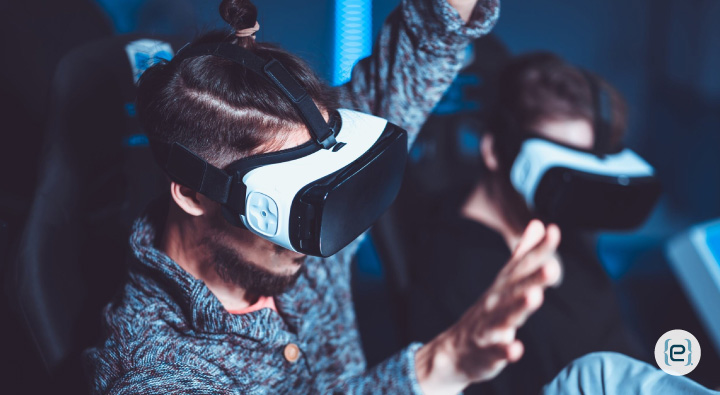Working in virtual reality (VR) has evolved far beyond its gaming roots, becoming a transformative force for the modern workplace. At eMazzanti, we’ve witnessed VR shift from a novelty to an essential business tool, empowering teams to innovate, collaborate, and learn in ways previously unimaginable.
Immersive Collaboration: Bridging Global Teams
Imagine your architects walking clients through unbuilt structures, surgeons practicing complex procedures without risk, or engineers prototyping designs in immersive 3D spaces. VR now makes these scenarios a reality. Teams scattered across continents share virtual workspaces, interacting with models and data as if standing side by side. This goes far beyond traditional video calls, creating genuine human connections in digital environments.
Hardware improvements—lighter, more comfortable headsets—and sophisticated enterprise software have paved the way for extended, productive use. For instance, in automotive design, teams can examine full-scale vehicle models together in virtual showrooms, making real-time adjustments that would be costly and time-consuming with physical prototypes. In healthcare, medical students train in virtual operating rooms, gaining invaluable experience without endangering real patients.
These examples highlight how VR is transforming not just how you work, but how you learn and develop professional skills. For more on how digital transformation is reshaping industries, check out our insights on digitalization and automation.
Key Factors for VR Workplace Integration
To successfully integrate VR into your workplace, several essential factors must be addressed:
- Robust Network Infrastructure: Reliable, high-speed connectivity ensures seamless experiences and minimizes downtime.
- Seamless Software Integration: VR tools must work with your existing systems and workflows.
- Comprehensive Training: Employees need guidance to maximize VR’s potential and adapt to new ways of working.
- Clear Usage Guidelines: Well-defined policies promote safe and productive VR use.
Industry leaders are investing in secure, enterprise-grade VR platforms that protect sensitive data while enabling unprecedented collaboration. Security remains paramount—explore our expertise in security and privacy to safeguard your virtual workspaces.

Weighing the Financial and Strategic Benefits
The financial implications of VR adoption extend beyond hardware costs. Organizations must balance these investments with potential returns, such as:
- Reduced travel expenses
- Accelerated product development cycles
- Enhanced training effectiveness
Our experience shows that companies embracing VR often discover unexpected benefits, including improved employee engagement and more effective knowledge transfer between experienced and junior team members. For a deeper dive into how emerging technologies drive business value, see our article on driving innovation with managed services.
The Future of VR: AI and Next-Gen Collaboration
Looking ahead, VR workspaces will likely become as common as video conferencing is today. The convergence of VR with artificial intelligence and high-speed networks promises even more compelling applications. Imagine AI assistants guiding virtual training sessions or real-time language translation in VR meetings—capabilities that are rapidly moving from science fiction to reality.
The most crucial considerations for VR implementation include user comfort, technical infrastructure, software compatibility, security protocols, and team readiness. Organizations must carefully evaluate these elements to ensure successful adoption and meaningful returns on investment. While challenges persist around long-term comfort and accessibility, the pace of improvement suggests these hurdles will soon be overcome.
For more on how AI is shaping the future of business technology, discover our latest thoughts on artificial intelligence in the workplace.
Embrace the Future with eMazzanti
Virtual reality has firmly established itself as a vital tool in the modern workplace, offering unique advantages that traditional collaboration methods simply cannot match. As VR technology matures, its role in professional settings will only grow more significant. When you embrace VR now, your organization positions itself at the forefront of workplace innovation, ready to leverage the full potential of new applications and capabilities.
The true power of VR lies not just in replicating physical interactions, but in creating entirely new ways of working, learning, and collaborating. At eMazzanti, we believe we’re only scratching the surface of what’s possible when you combine human creativity and virtual reality in professional settings. Ready to transform your workplace? Contact eMazzanti today to learn how we can help you unlock the future of work.






